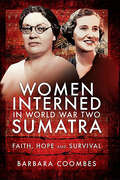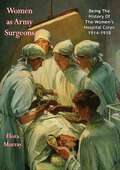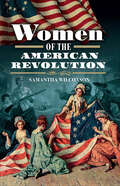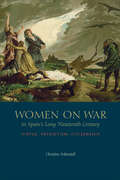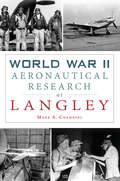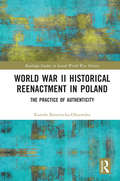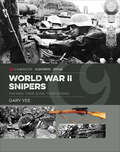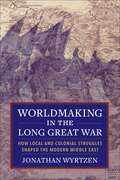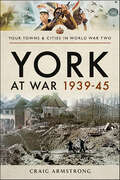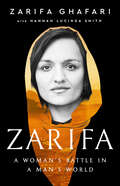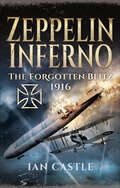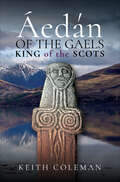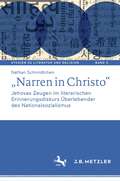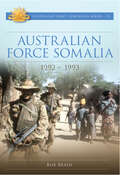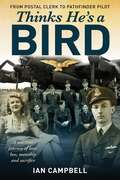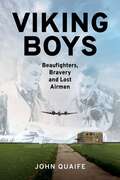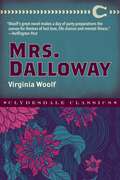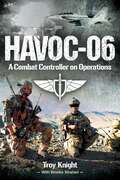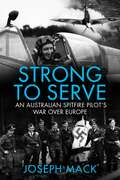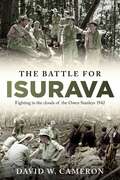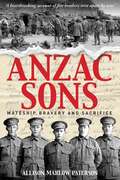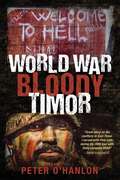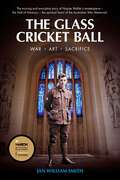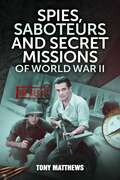- Table View
- List View
Women Interned in World War Two Sumatra: Faith, Hope and Survival
by Barbara CoombesThousands of women and children were among those who struggled to leave Singapore just before capitulation on February 15 1942; their hope was to reach safety. For many that hope was never realised; countless numbers drowned as ships were bombed and sunk on their way to ‘safety’. The ‘lucky’ ones who survived the onslaught of the ships would become guests of the Japanese; many of these would not live to see the end of the war. Two very different women fleeing on those last ships and subsequently interned in camps throughout Sumatra were Margaret Dryburgh, a missionary and teacher, and Shelagh Brown, a secretary at the Singapore Naval Base. Their paths crossed briefly prior to the catastrophic events of 1942 and met again in internment. The ‘Captives Hymn’ composed by Margaret Dryburgh was initially sung by herself along with Shelagh Brown and friend Dorothy MacLeod on 5 July 1942. It has since been sung at services throughout internment and continues to be sung at services all over the world. Music and faith were fundamental to both their lives and Margaret’s creative talents lifted the spirits of everyone during those dark and difficult days. In a remarkable partnership, when the women were struggling to find something new that would lift their flagging spirits, Margaret and fellow internee Norah Chambers produced a ‘Vocal Orchestra’ using women’s voices in place of instruments. The first performance stunned the entire camp; they had never heard anything so beautiful and momentarily made them feel that they were free and floating away with the music. This true account, using personal diaries and family documents traces Margaret Dryburgh and Shelagh Brown’s journey from childhood through to adulthood and internment. Early life shapes adult life and perhaps contributed to their response to captivity which showed courage, tenacity, perseverance and surprisingly, given the appalling conditions, a good deal of humour. ‘May the Day of Freedom Dawn’
Women as Army Surgeons: Being The History Of The Women's Hospital Corps 1914-1918
by Flora MurrayFlora Murray's book is a record of the Women's Hospital Corps in France and the Endell Street Military Hospital, London. Despite a lack of training in trauma and orthopaedics, and with no previous experience in military medicine, she met the challenge of treating often horrific wartime casualties and returning battle-injured men to society. She, along with her partner Dr Louisa Garrett Anderson, redefined gender roles in military medicine.-Print ed.
Women of the American Revolution
by Samantha Wilcoxson“This is an extremely well-rounded collection of biographies that delves into the personal lives, professional accomplishments, and influences on the American Revolution of a wide variety of women from the days of a freshly formed, burgeoning America that will appeal to readers of women’s history and American history.” -BooklistWomen of the American Revolution explores the trials of war and daily life for women in the United States during the War of Independence. What challenges were caused by the division within communities as some stayed loyal to the king and others became patriots? How much choice did women have as their loyalties were assumed to be that of their husbands or fathers? The lives of women of the American Revolution will be examined through an intimate look at some significant women of the era. Many names will be familiar, such as Martha Washington who traveled to winter camps to care for her husband and rally the troops and Abigail Adams who ran the family’s farms and raised children during John’s long absences. Elizabeth Schuyler Hamilton, popularized by Lin Manual Miranda’s Hamilton, was also an early activist working tirelessly for multiple social causes. Decide for yourself if the espionage of Agent 355 or the ride of Sybil Ludington are history or myth. Not all American women served the side of the revolutionaries. Peggy Shippen gambled on the loyalist side and paid severe consequences. From early historian Mercy Otis Warren to Dolley Madison, who defined what it means to be a US First Lady, women of the American Revolution strived to do more than they had previously thought possible during a time of hardship and civil war.
Women on War in Spain’s Long Nineteenth Century: Virtue, Patriotism, Citizenship (Toronto Iberic)
by Christine ArkinstallThe ways in which women have historically authorized themselves to write on war has blurred conventionally gendered lines, intertwining the personal with the political. Women on War in Spain’s Long Nineteenth Century explores, through feminist lenses, the cultural representations of late nineteenth- and early twentieth-century Spanish women’s texts on war. Reshaping the current knowledge and understanding of key female authors in Spain’s fin de siècle, this book examines works by notable writers – including Rosario de Acuña, Blanca de los Rios, Concepción Arenal, and Carmen de Burgos – as they engage with the War of Independence, the Third Carlist War, Spain’s colonial wars, and World War I. The selected works foreground how women’s representations of war can challenge masculine conceptualizations of public and domestic spheres. Christine Arkinstall analyses the works’ overarching themes and symbols, such as honour, blood, the Virgin and the Mother, and the intersecting sexual, social, and racial contracts. In doing so, Arkinstall highlights how these texts imagine outcomes that deviate from established norms of femininity, offer new models to Spanish women, and interrogate the militaristic foundations of patriarchal societies.
World War II Aeronautical Research at Langley (Military)
by Mark A. ChambersThe effort to win the war began at home--and for the researchers at Langley Memorial Aeronautical Laboratory, enhancing America's military aviation arsenal was the key to victory.Formed in 1915, the National Advisory Committee for Aeronautics established itself over the next 25 years as one of the world's finest research organizations. When World War II began in 1939, the NACA employed a mere 500 workers and maintained a budget slightly in excess of $4 million. To meet the demands of the war, a special partnership was quickly forged between NACA researchers, industry designers, and military planners. The Langley laboratory possessed world class aeronautical research facilities and flight research operations, making it ideally suited to help America win the war.Military historian Mark Chambers tells the story of the monumental task of developing the planes that spurred Allied victory in World War II.
World War II Historical Reenactment in Poland: The Practice of Authenticity (Routledge Studies in Second World War History)
by Kamila Baraniecka-OlszewskaThis book explores the consequences of the latest political shifts in Central Eastern Europe: the rise of right-wing parties and, among other things, politics becoming more invested in history. These phenomena coincide and overlap with the democratisation of history by turning the past into a hot topic, persistently present in the public sphere and often evoking strong emotions. Ethnographic research (conducted in 2012-2016) focusing on how World War II reenactors experience the past serves as the basis to analyse the ways in which the group uses the widespread, often institutionalised interest in history to – on the one hand – become involved in debates on World War II and the remembrance thereof, and – on the other – to authentically experience this past. The volume therefore analyses how physical the process of creating and experiencing grassroots visions of the past is, and how these visions interact with the public discourse about the past. Reenactors’ ability to marry the often-contradictory orders of historical truth, authenticity, and representation is explored. Moreover, Baraniecka-Olszewska analyses how the reenactors overcome various obstacles on their way towards authentic experiences, performing history through their bodies.
World War II Snipers: The Men, Their Guns, Their Stories (Casemate Illustrated Special)
by Gary YeeThis illustrated military history reveals the untold story of WWII snipers, from training and firearms to combat and field operations.Though snipers played a significant role in the battlefields of World War II, they are often overlooked by historians. In this volume, military historian and firearms expert Gary Yee offers a comprehensive and fully illustrated narrative of snipers across the major theaters of conflict: Europe, the Eastern Front, and the Pacific. Drawing on memoirs, archives, wartime photographs, and eyewitness accounts, World War II Snipers presents a compelling and authoritative study.Each of the warring countries had its own unique methodology for selecting and training snipers. They recruited hunters, outdoorsmen, competitive shooters, and military veterans to take on this highly skilled role. They were deployed to ensure battlefield dominance and instill a paralyzing fear among the enemy. Yee tells the stories of these soldiers who were both admired and at times reviled by their own comrades. He also includes a lengthy chapter on the sniper rifles and other equipment issued to snipers.
Worldmaking in the Long Great War: How Local and Colonial Struggles Shaped the Modern Middle East
by Jonathan WyrtzenIt is widely believed that the political problems of the Middle East date back to the era of World War I, when European colonial powers unilaterally imposed artificial borders on the post-Ottoman world in postwar agreements. This book offers a new account of how the Great War unmade and then remade the political order of the region. Ranging from Morocco to Iran and spanning the eve of the Great War into the 1930s, it demonstrates that the modern Middle East was shaped through complex and violent power struggles among local and international actors.Jonathan Wyrtzen shows how the cataclysm of the war opened new possibilities for both European and local actors to reimagine post-Ottoman futures. After the 1914–1918 phase of the war, violent conflicts between competing political visions continued across the region. In these extended struggles, the greater Middle East was reforged. Wyrtzen emphasizes the intersections of local and colonial projects and the entwined processes through which states were made, identities transformed, and boundaries drawn. This book’s vast scope encompasses successful state-building projects such as the Turkish Republic and the Kingdom of Saudi Arabia as well as short-lived political units—including the Rif Republic in Morocco, the Sanusi state in eastern Libya, a Greater Syria, and attempted Kurdish states—that nonetheless left traces on the map of the region. Drawing on a wide range of sources, Worldmaking in the Long Great War retells the origin story of the modern Middle East.
York at War, 1939–45 (Your Towns & Cities in World War Two)
by Craig ArmstrongYork has often been overlooked when it comes to Britain’s wartime experience. The city was not though to have many industries of great wartime importance and it was not a part of the initial evacuation scheme. Yet this does not accurately reflect the wartime contributions of the city, as several of its large confectionary factories were converted to wartime use, while it was also a key rail hub, forming a vital link in the national network. Unbeknownst to the people of the city, York had been selected as the latest target in the Luftwaffe’s Baedeker Raids. In a short, sharp, blitz raid in the early hours of 29 April 1942, more than 3,000 houses were destroyed or damaged and almost 100 people killed while others were left seriously injured. Wartime York had a particularly close connection with the RAF as the city was surrounded by airbases. People became very used to seeing the uniforms of men and women from Bomber Command and the city was to prove very popular with airmen seeking relaxation. Places such as Betty’s Bar became infamous as airmen of almost every Allied nationality came to blew off steam. The nearby presence of the airfields also meant that the people of York and the surrounding area were witnesses to tragedies when aircraft crashed on their return to the bases.
Zarifa: A Woman's Battle in a Man's World
by Zarifa Ghafari Hannah Lucinda SmithA poignant memoir by one of Afghanistan's youngest female mayors and the inspiration behind the upcoming Netflix documentary, In Her Hands, executive produced by Hilary Rodham Clinton and Chelsea Clinton. Zarifa Ghafari was three years old when the Taliban banned girls from schools, and she began her education in secret. She was six when American airstrikes began. She was twenty-four when she became mayor – one of the first female mayors in the country – and first of Wardak, one of the most conservative provinces in Afghanistan. An extremist mob barred her from her office; her male staff walked out in protest; assassins tried to kill her three times. Through it all, Zarifa stood her ground. She ended corruption in the municipality, promoted peace, and tried to lift up women, despite constant fear for herself and her family. When the Taliban took Kabul in 2021, Ghafari had to flee. But even that couldn&’t stop her. Six months later, she returned, to continue her work empowering women. Zarifa is an astonishing memoir that offers an unparalleled perspective of the last two decades in Afghanistan from a citizen, daughter, woman and mayor. Written with honesty, pain, and ultimately, hope, Zarifa describes the work she did, the women she still tries to help as they live under Taliban rule, and her vision for how grassroots activism can change their lives and the lives of women everywhere.
Zeppelin Inferno: The Forgotten Blitz, 1916
by Ian CastleAt the beginning of 1916, as the world entered the second full year of global conflict, the cities, towns and villages of Britain continued to lay vulnerable to aerial bombardment. Throughout that period German Zeppelin airships and seaplanes had come and gone at will, their most testing opposition provided by the British weather as the country’s embryonic defences struggled to come to terms with this first ever assault from the air. Britain’s civilians were now standing on the frontline — the Home Front — like the soldiers who had marched off to war. But early in 1916 responsibility for Britain’s aerial defence passed from the Admiralty to the War Office and, as German air attacks intensified, new ideas and plans made dramatic improvements to Britain’s aerial defence capability. While this new system could give early warning of approaching raiders, there was a lack of effective weaponry with which to engage them when they arrived. Behind the scenes, however, three individuals, each working independently, were striving for a solution. The results of their work were spectacular; it lifted the mood of the nation and dramatically changed the way this campaign was fought over Britain. The German air campaign against Britain in the First World War was the first sustained strategic aerial bombing campaign in history. Despite this, it has become forgotten against the enormity of the Blitz of the Second World War, although for those caught up in the tragedy of these raids, the impact was every bit as devastating. In Zeppelin Inferno Ian Castle tells the full story of the 1916 raids in unprecedented detail in what is the second book in a trilogy that will reveal the complete story of Britain’s ‘Forgotten Blitz’.
Áedán of the Gaels: King of the Scots
by Keith ColemanThis is the first full-length work devoted to Áedán mac Gabráin, 6th century king of Dál Riata in Scotland. An associate of the famous St. Columba, he was the first recorded king to be ordained in the British Isles and was the most powerful ruler in his generation. His astonishing military reach took him from Orkney, Pictland, Ireland, Northumbria and the Isle of Man. This book details his dominant career, which came to a shattering end after decades of warfare at the Battle of Degsaston in AD 603. Beyond the record of warfare, there is a unique and tantalising accumulation of legend concerning Áedán, from stories about his birth, to tales of him in battle with Irish heroes. English sources mention him and he is one of the few Gaelic kings to feature prominently in Welsh tradition, where he is remembered as a uniquely powerful player in the north of Britain. Modern writers highlight Áedán as the father of a prince named Arthur, which has led to his place in Arthurian studies. Áedán’s prominence in his era qualifies him as a fascinating figure, whose life and legend are accessibly explored in this exciting account of this unique ruler.
„Narren in Christo“: Jehovas Zeugen im literarischen Erinnerungsdiskurs Überlebender des Nationalsozialismus (Studien zu Literatur und Religion / Studies on Literature and Religion #5)
by Nathan SchmidtchenDie vorliegende Studie ist die erste, die den Erinnerungsspuren nachgeht, die Jehovas Zeugen (Bibelforscher) in den Erzähltexten Überlebender des Nationalsozialismus hinterlassen haben. Trotz unterschiedlicher Erinnerungskulturen und -interessen seitens der Autoren ergibt sich ein einheitliches und zugleich schillerndes Bild. Häufig nur Erzählobjekte ohne eigene Stimme, bleiben sie randständig, andersartig und widersprüchlich. Jehovas Zeugen faszinieren, befremden und stören. Als Heilige, Propheten, Märtyrer, Samariter und Sündenböcke stehen sie in der Nachfolge des Sohnes Gottes. Bezüge ergeben sich auch zur Figur des christlichen Narren: nicht von dieser Welt, der Welt des nationalsozialistischen Terrors, aber zugleich in ihr und gegen sie zeugend.
Australian Force Somalia: 1992-1993
by Bob BreenIn 1992, civil war, drought and economic collapse left four million Somalis destitute, displaced and starving. Twenty-six nations sent their young men and women to make sure that food reached those who needed it. Australia joined this international &‘coalition of the willing&’ with the Australian Force Somalia comprised of a 1,000-strong battalion group based on 1st Battalion, the Royal Australian Regiment from the 3rd Brigade in Townsville as well as a small national liaison headquarters from 1st Division in Brisbane. Opposing the US-led Unified Task Force were Somali warlords and their militia armies that had been pillaging humanitarian aid and terrorising the Somali population during a bloody civil war. American airpower forced the warlords to send their armies into hiding across the border, but thousands of bandit groups, criminal gangs and violent political factions remained to threaten humanitarian operations and the safety hundreds of ex-patriate aid agency staff. Australian Army units will serve in troubled parts of the world in the future. The lessons learned from the &‘unforgiving school of trial and error&’ in Somalia in 1992/93 will be invaluable. They will apply not only to those confronting hostile groups on the frontline but also those who command and support them from higher levels of command. Operations in 1993 were Exhibit A for change in the ways and means for mobilising, preparing and sustaining land forces serving overseas.
Thinks He's a Bird: From Postal Clerk to Pathfinder Pilot
by Ian CampbellA remarkable and powerful story of indomitable human spirit, passion and courage.In 1941 when Keith Watson, a teenage postal clerk from country Queensland, enlisted in the RAAF, he had absolutely no idea what he was getting himself into. The following four years were an adrenaline-filled ride of love, loss, mateship, ambition, courage and sacrifice, all recorded in an intimate 800-page diary. This is an account of how war tests character and puts the young on an accelerated path to maturity. From childhood and his first inspirational flight to his emergence as an elite Path Finder Force pilot, Keith&’s story is compelling and tragic, yet uplifting. He confronts constant death and injury, challenges authority, learns to skipper a crew and finds his trademark humility running headlong into ego and ambition. Keith&’s graphic accounts of Pathfinder missions bring a deepening sense of the relentless physical and psychological toll on the crews of Bomber Command. Counterbalancing these experiences are Keith&’s relationships with wartime mates, the woman who loved him, and the UK families who sacrificed much on his behalf. Based on material never before released, Thinks He&’s A Bird is a stunning account of service, sacrifice and two enduring and competing passions – flying and Norah, the love of Keith&’s life. ,
Viking Boys: Beaufighters, Bravery and Lost Airmen
by John QuaifeAn Australian attack aircraft flies into a ship with guns blazing. Both crewmen are killed, but does anyone notice? At the entrance to Orsta fjord, down an overgrown path, a granite stone stands on a rocky outcrop at the water&’s edge. Roughly inscribed in English, it records the loss of two young Australians. The stone was erected in 1947 by parents grieving the loss of their son. Each year villagers of Orsta pay homage to the sacrifice of these two young Australians who died to restore their freedom. Beaufighter pilot James Hakewill and his navigator Fred Sides died on 5 December 1944 when their aircraft slammed into a German gunboat in a fjord in Norway. Official records contain no mention of the aircraft hitting the ship. No one in the squadron knew what had happened. Neil Smith thought he had shot down his wingman. Kurt Heinowitcz from Breslau shovelled coal for the German Navy – he was on the gunboat. Fred&’s mum believed her son had survived the crash and was lost in Russia. James was nominated for the Victoria Cross. Viking Boys tells their stories and reveals the experience of young Australians who fought and flew against German shipping in the fjords of Norway – and called themselves the Viking Boys.
Mrs. Dalloway (Clydesdale Classics)
by Virginia Woolf"A revolutionary novel of profound scope and depth, about a day in the life of a woman who runs a few errands, sees an old suitor and gives a dull party. It&’s a masterpiece created out of the humblest narrative materials. . . . Woolf was one of the first writers to understand there are no insignificant lives, only inadequate ways of looking at them." —The New York Times The story follows one day of upper-class housewife Clarissa Dalloway&’s life as she plans and hosts a dinner party at her house. Along the way she meets with people from both her past—a former suitor whose proposal she rejected and whom she no longer gets along with—and her present—her distant husband, Richard; her daughter, Elizabeth; and her daughter&’s teacher, Miss Kilman, whom she despises (and who feels the same towards Clarissa). Proving herself a master and innovator of the parallel narrative, Woolf separately introduces reader to another storyline about a young veteran who was once a poet and a romantic before experiencing the horrors of war and becoming suicidal. He is diagnosed with mental illness and is being forced to separate from his wife and go to a mental asylum. Written by one of the most prolific female authors of the twentieth century, this stunning novel is often considered Woolf's magnum opus. Enjoy this beautifully rejuvenated edition of Virginia Woolf&’s Mrs. Dalloway.
HAVOC-06: A Combat Controller on Operations
by Troy KnightI received a target indication from one of the rear team members and observed movement coming from the left of the area of engagement. I then saw them, two enemy fighters moving to a new position. I must have let rip about twenty rounds and not one of the rounds hit them. I had missed completely! &“You shit shot,&” swearing at myself under my breath. My teeth were clenched and I was pissed off at my own incapability with a rifle, however, I realised I had a primarily role to play and that was as the Platoon JTAC. Havoc-06 is the call sign of former Australian Combat Controller, Troy Knight. As a Royal Australian Air Force Airfield Defence Guard, Troy had not found the military adventure he sought; combat operations. His thirst for overseas deployment saw him privately contract his services in Iraq and South East Asia, but when he got whiff that the Australian Defence Force was raising a new defence capability, he couldn&’t help but want to be part of it. The new Defence capability, termed the &‘Special Tactics Project,&’ would see Troy undertaking the gruelling Commando Selection course and passing, making him one of Australia&’s first Combat Controllers attached to the Australian Army 2nd Commando Regiment. As a member of the Special Forces unit, Troy&’s lifelong dream of taking part in combat operations would come to fruition, but the reality of his dream would also play havoc on his life. Havoc-06 is the untold story of the Australian Combat Controller, but it is also Troy&’s personal story and one that will resonate with so many.
Strong to Serve: An Australian Spitfire Pilot's war over Europe
by Joseph MackFollowing training in Australia, Canada and the UK, Fred Riley flew Spitfires with No 130 (Punjab) Squadron RAF from October 1943 until December 1944. Flying the Spitfire Mk.V, he escorted bombers, flew fighter sweeps, and undertook hazardous patrols on D-Day. With a new Spitfire Mk.XIV, Fred intercepted V-1 flying bombs aimed at London. Later, from the Netherlands and Belgium, he conducted anti jet and low-level sorties over those countries and into Germany. During one such flight, Fred and his colleagues were surprised by a superior force of Luftwaffe fighters. Fred&’s logbook records historically significant names, places and events. He served with notable aces, escorted General Eisenhower, and protected transport aircraft during Operation Market Garden. The logbook ends on 22 December 1944 – Fred was shot down and severely injured while supporting beleaguered American forces. However, it is Fred&’s memories of instructors, fellow trainees, and the pilots he flew with that are most enlightening. This account details Fred&’s journey to becoming a fighter pilot and his remarkable recollections of combat over the UK and Europe. It also highlights the courage, achievements and sacrifices of the men of 130 Squadron – a multi-national group of pilots who lived up to their motto: &‘Strong to Serve&’.
The Battle for Isurava: Fighting in the clouds of the Owen Stanley 1942
by David W. CameronWithin 24 hours of the Japanese invasion of northern New Guinea at Gona in July 1942, the Australian militiamen of &‘B&’ Company, 39th Battalion, spent four weeks fighting a delaying action against a crack Japanese force outnumbered by three to one. By mid-August, the rest of the battalion had arrived, and these men took up a position at Isurava, in the heart of the cloud covered mountains and jungles of the Owen Stanley Range. At Isurava, this small militia force of the 39th Battalion now numbering around 300 men was determined to make a stand against a crack Japanese force of the 144th Regiment and supporting elements, numbering at least 1500. Then on the day the Japanese launched their attack, to the great relief of these militiamen, reinforcements from the 2nd AIF who had fought with great distinction in the Middle East began to arrive in the afternoon having spent days struggling up the track from Port Moresby. Even so, the Australians were still outnumbered, as the Japanese also received reinforcements, and unlike the Japanese, the Australians had no supporting artillery or medium machineguns. The battle for Isurava would be the defining battle of the Kokoda Campaign and has rightfully been described as Australia&’s Thermopylae. It was here that Australia&’s first Victoria Cross in the Pacific war was awarded when the Japanese conducted several ferocious attacks against the Australian perimetre. Private Bruce Kingsbury led an Australian counterattack, rushing forward sweeping the Japanese positions with his Bren gun, saving he situation when all seemed lost — he was killed leading the charge. Another two men were also nominated for the VC during the fighting at Isurava. The outnumbered and poorly equipped Australians managed to hold back the Japanese advance for almost a week; only then did these battle scared and weary men begin a month long fighting withdraw towards Ioribaiwa Ridge just north of Port Morsby. However, their sacrifice provided time for the Australian 25th Brigade to be brought forward — finally forcing the Japanese to withdrawal just as they glimpsed the lights of Port Morseby.
Anzac Sons: Mateship, Bravery and Sacrifice
by Allison Paterson…Well dear Jim it breaks my heart to write this letter. Our dear [brother] was killed yesterday morning at 5.30. The bullet killed him instantly and he never spoke a word. I had just left him and gone down the trench to see the other lads when I was called back. Oh Jim it is awful … Oh I do hope he is the last … It is April 27, 1918, Jim&’s brother writes from the battlefields of France. Of five brothers serving on the Western Front, three have given their lives; another has been hospitalized. Six agonizing months of brutal warfare were yet to be endured … World War I was a senseless tragedy. Its long shadow darkened the four corners of the world. In Mologa, Victoria, once a bustling community, stands a lonely stone memorial. Etched within the granite are the names of the Marlow brothers and their mates; a testament to ordinary people who became heroes. Anzac Sons is composed from a collection of over 500 letters and postcards written by the brothers who served. From the training grounds of Victoria, Egypt and England, to the Western Front battlefields – Pozieres, Bullecourt, Messines, Menin Road, Passchendaele, Villers-Bretonneux and the battles of 1918 – this compelling true story was compiled by the granddaughter of a surviving brother. She takes us on her journey as she walks in the footsteps of her ancestors.This is a story of mateship, bravery and sacrifice; it is a heartbreaking account of a family torn apart by war. It is a pledge to never forget.
World War Bloody Timor
by Peter O’HanlonWorld War Bloody Timor gives a revealing insight into the extraordinary life of the everyday digger and service in a conflict that was far from ordinary. My name is Peter O&’Hanlon, but everyone in the military, from the lowest digger to the highest officer, has always called me &‘Irish&’. You won't see me, or the service men and women like me, featured in the latest blockbuster, but our service lives include drama, laughs and accounts of deep turmoil that are worth telling. I was a member of the Australian Army for 11 years and during my deployment as part of the INTERFET force, serviced three very impacting tours of East Timor. What was it like, as a 19 year to land at the Dilli Airport in Australia&’s largest deployment since Vietnam? What are the little-known battles and obstacles that cause unseen scars through a deployment? What are the impacts on re-integrating into the civilian community? This is my story, an ordinary soldier; the juicy yarns, the laughs, the battles, the devastating lows, the soaring highs, the blood, sweat and tears we give in service every day. It will make you laugh and may make you cry. It's the cold hard truth about the impact of a different type of war fought by many who deployed to Timor.
The Glass Cricket Ball: War. Art. Sacrifice
by Jan William SmithThe moving and evocative story of Napier Waller&’s masterpiece – the Hall of Memory – the spiritual heart of the Australian War Memorial.The one-armed Melbourne artist Napier Waller OBE CMG created the great Hall of Memory at the Australian War Memorial in Canberra. Waller died in 1972 without knowing that 20 years later his greatest work would be the place for a tomb that would be central to Australia&’s remembrance of war dead. The Glass Cricket Ball is a story of Waller&’s life, the creation of a great artwork and the bringing home and re-burial of the remains of an Unknown Australian Soldier from a French World War I battleground cemetery. Napier Waller was a casualty at the battle of Bullecourt. A watercolour artist on the Western Front should be out of his comfort zone when his wounds include the loss of his right painting arm. But Napier Waller&’s answer was to become Australia&’s greatest monumental artist – with his left hand.Waller and the war historian Charles Bean had a fine time deciding which words described the quintessential qualities of Australian fighting men and women in World War I. The words would be included at the foot of each of the fifteen windows of the Hall of Memory and would define fighting, social and personal qualities. The window defined as &“ancestry&” would include a sporting image and Waller chose to include a stained-glass cricket ball and stumps – a tradition of the Anzacs of World War I.
War in the Pacific: Formidable Foe – 1942-1943 (War In The Far East Ser. #1)
by Peter HarmsenWar in the Pacific is a trilogy of books comprising a general history of the war against Japan; unlike other histories it expands the narrative beginning long before Pearl Harbor and encompasses a much wider group of actors to produce the most complete narrative yet written and the first truly international treatment of the epic conflict.War in the Pacific: Formidable Foe – 1942-1943 Details the astonishing transformation that took place from 1942 to 1943, setting the Allies on a path to final victory against Japan. The central importance of China is highlighted in a way that no previous general history of the war against Japan has achieved.
Spies, Saboteurs and Secret Missions of World War II
by Tony MatthewsWhat kind of courage does it take for an ordinary married couple to confront the Nazi regime of Hitler&’s vicious Third Reich? And why did two men betray their fellow secret agents after landing on American shores with the intention of carrying out sabotage attacks on a massive scale? Why did the Germans murder more than two hundred and sixty innocent men in retaliation for a botched Resistance attempt to steal a simple truckload of meat? From technical wizardry that goes disastrously wrong, to underwater warfare with a sting in its tail, this new book by Tony Matthews delves into a wide range of top-secret stories, including black propaganda missions, calamitous Resistance operations and accounts of espionage activities at the very highest level. Spies, Saboteurs and Secret Missions of World War II is a fascinating insight into some of the most astonishing clandestine activities of the Second World War.
